Disclosure: This article contains affiliate links. We may earn a commission from purchases at no extra cost to you, which helps our travel content.
The first time I stepped through the grand gates of Gyeongbokgung Palace, the vinyl collector in me felt that same rush of discovery—like finding a rare Japanese pressing in a dusty record shop. Seoul's royal heritage sites aren't just historical landmarks; they're cultural vinyl waiting to be played—each with its own unique rhythm and story. After five visits to this incredible city, I've crafted this guide for couples looking to experience the perfect harmony between ancient traditions and modern Korean life during spring, when cherry blossoms frame these majestic structures in pink perfection.
The Five Grand Palaces: Seoul's Greatest Hits
If Seoul's royal heritage were an album, the Five Grand Palaces would be its platinum-selling tracks. Each palace offers its own distinct vibe, but together they create a masterpiece of Korean royal history.
Gyeongbokgung Palace stands as the headliner—the most magnificent and largest of Seoul's palaces. Built in 1395, it served as the main royal residence during the Joseon Dynasty. Don't miss the changing of the guard ceremony at 10am and 2pm (except Tuesdays)—it's like watching a perfectly choreographed music video from centuries past. The National Folk Museum inside the grounds provides essential context to understand Korean cultural heritage.
Changdeokgung Palace hits different notes with its UNESCO-listed Secret Garden (Huwon). While Gyeongbokgung commands attention with grandeur, Changdeokgung seduces with subtlety—its buildings harmoniously integrated with the natural landscape. Pre-book the Secret Garden tour; spots fill faster than a Seoul underground club on Saturday night.
Deoksugung Palace brings unexpected fusion with its blend of traditional Korean and Western neoclassical buildings—like when a DJ perfectly mixes two seemingly incompatible tracks. Its stone-wall walkway is particularly romantic in the evening when the palace is illuminated.
For the full experience, I highly recommend picking up the Combination Ticket which grants access to four palaces and Jongmyo Shrine at a significant discount. It's valid for three months, giving you plenty of flexibility.
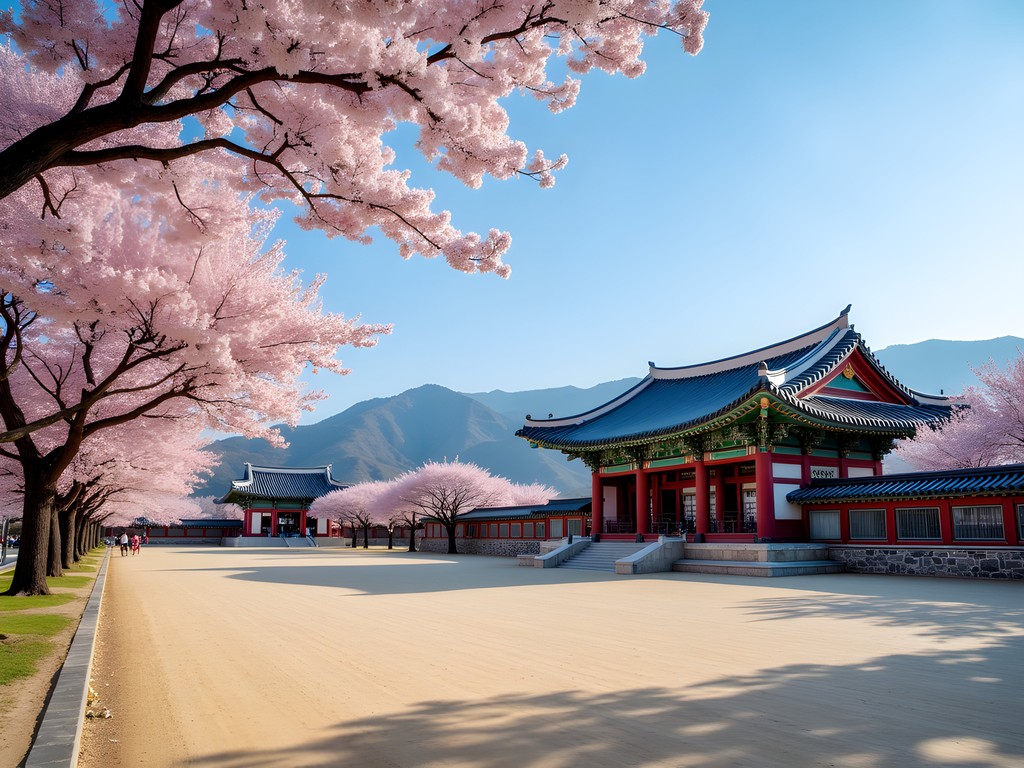
💡 Pro Tips
- Visit Gyeongbokgung early morning to avoid crowds and get the best photos
- Changdeokgung's Secret Garden requires a separate ticket and guided tour—book in advance
- Download the Korea Tour Card app for easy navigation between sites
Bukchon Hanok Village: Seoul's Vintage Neighborhood
Every city has that one neighborhood that feels like stepping into a different era—Bukchon Hanok Village is Seoul's answer to Tokyo's Shimokitazawa or Melbourne's Fitzroy, except instead of vintage record stores, you'll find 600-year-old traditional Korean houses (hanoks).
Sandwiched between Gyeongbokgung and Changdeokgung, this hillside neighborhood offers the perfect counterpoint to palace-hopping. While the palaces show how royalty lived, Bukchon reveals the historical lifestyle of nobles and aristocrats. The narrow alleyways winding between beautifully preserved hanoks create an atmosphere that's both intimate and revealing—like listening to a personal folk album after a stadium rock show.
Many hanoks now house cultural centers, boutiques, teahouses, and guesthouses. For the authentic experience, my partner and I stayed at a hanok guesthouse last spring. Sleeping on traditional floor mats (with heated floors) while hearing the subtle creaks of the wooden structure was like experiencing the analog warmth of vinyl in architectural form.
A quality handheld fan is essential during spring walks through Bukchon—not just for cooling down but as a stylish prop for photos. I picked up a beautiful hanji paper fan with traditional designs that's now displayed in our home alongside my vinyl collection.
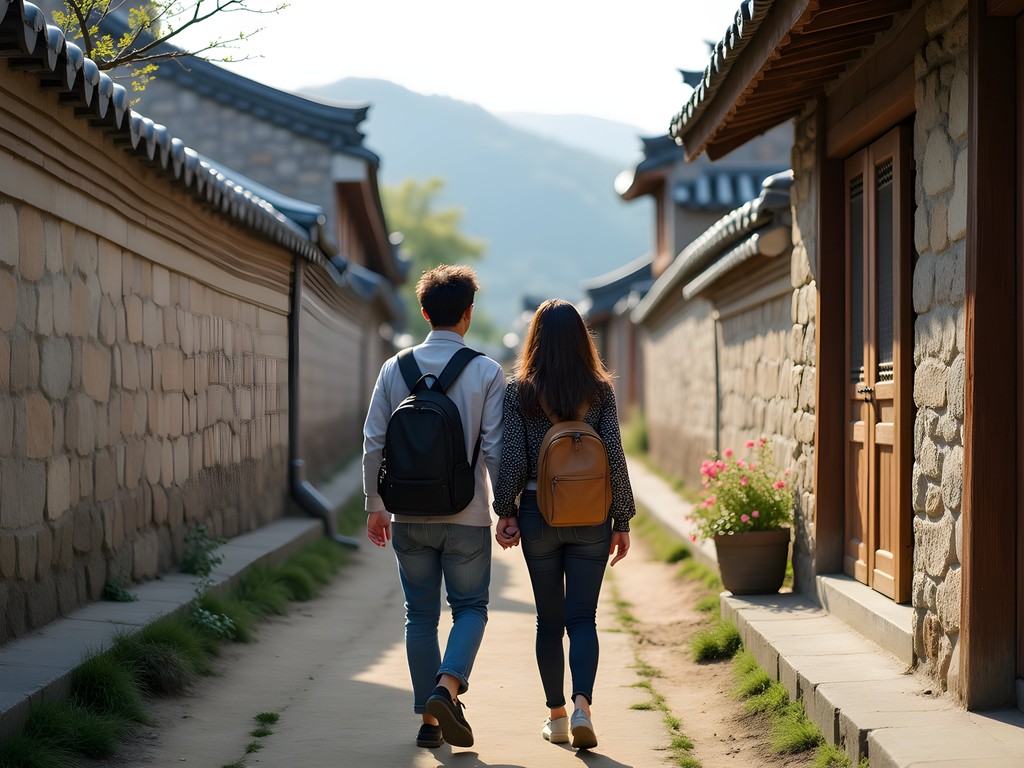
💡 Pro Tips
- Visit on weekdays to avoid weekend crowds
- Respect privacy signs—many hanoks are still private residences
- Wear comfortable shoes—the hills are steeper than they appear on Instagram
Jongmyo Shrine: Seoul's Sacred Rhythm
If Seoul's palaces are like mainstream K-pop hits, Jongmyo Shrine is that underground track with depth that true music aficionados appreciate. This UNESCO World Heritage site isn't flashy—its minimalist design emphasizes straight lines and a restrained color palette—but its cultural significance runs deep.
Jongmyo houses the spirit tablets of Joseon Dynasty kings and queens and hosts the Jongmyo Jerye, the world's oldest continuously performed royal ancestral ritual. The ceremony combines music, dance, and ceremony in a performance that's remained largely unchanged since the 14th century.
During my last visit, I was fortunate enough to witness a practice session for the Jongmyo Jerye. The ancient court music (gagaku) created an atmosphere that transported me completely—similar to how certain vinyl records can create their own sonic environment in your living room. The ritual's precisely choreographed movements and haunting melodies have an almost hypnotic quality.
Visiting Jongmyo requires joining a guided tour (available in English), which enhances the experience significantly. Our guide explained the symbolic meaning behind architectural elements and ritual objects that would have otherwise gone unnoticed.
The shrine's layout follows strict Confucian principles about symmetry and spiritual harmony. I found myself drawing parallels to how I organize my record collection—there's a specific order and meaning that might not be immediately obvious to casual observers but creates a profound sense of rightness.
For this contemplative experience, I recommend bringing a portable meditation cushion to sit comfortably in the shrine's courtyard and absorb the atmosphere. The shrine grounds invite quiet reflection, and having a comfortable seat lets you linger longer.
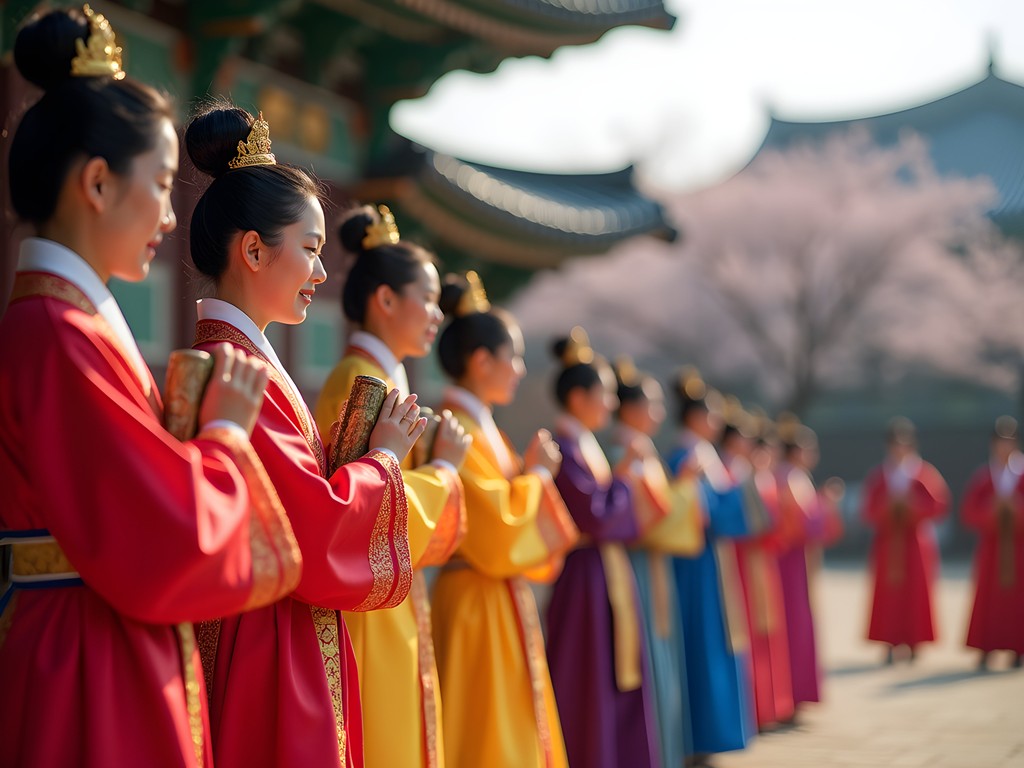
💡 Pro Tips
- English guided tours run at 10am, 12pm, and 4pm
- Visit on the first Sunday in May to witness the grand Jongmyo Daeje ceremony
- Photography is restricted in certain areas to preserve the sacred atmosphere
Insadong & Samcheong-dong: Where Heritage Meets Hipster
After immersing yourself in Seoul's royal past, Insadong and neighboring Samcheong-dong offer the perfect cultural comedown—like that mellow track that follows an intense musical climax. These districts blend traditional Korean culture with contemporary art and design in a way that speaks directly to my vinyl-collecting soul.
Insadong's main street, Insadong-gil, is lined with galleries, antique shops, and traditional craft stores. Here, I discovered beautiful hanji paper products, handmade ceramics, and even some Korean traditional musical instruments. For tea enthusiasts, the traditional teahouses hidden in the alleys offer an experience that rivals Japan's tea ceremony but with a distinctly Korean flavor profile.
One standout spot is MMCA (National Museum of Modern and Contemporary Art) in Samcheong-dong. The museum itself is impressive, but I was equally captivated by the surrounding area's boutique cafés and design shops. It's where Seoul's creative class gathers—the equivalent of Berlin's art districts but with Korean aesthetics.
For couples, I recommend picking up matching traditional Korean bookmarks as meaningful souvenirs. These intricate pieces featuring traditional Korean knot designs are both beautiful and functional—I use mine to mark my favorite music biographies.
After exploring the galleries, head to one of the rooftop cafés for a sunset view of the palace grounds and Seoul's urban landscape. The contrast between ancient rooftops and modern skyscrapers creates a visual mashup that perfectly captures Seoul's essence—like a brilliant sample that combines classical elements with contemporary beats.

💡 Pro Tips
- Visit Insadong on Sundays when the main street becomes pedestrian-only
- Look for 'Ssamziegil' complex—a spiral-shaped shopping center with unique artisan shops
- Many traditional craft shops offer hands-on workshops—perfect for couples' activities
Nighttime Palace Experiences: Royal Heritage After Dark
Most travelers experience Seoul's royal heritage sites during daylight hours, but something magical happens when the sun sets. Select palaces open for night viewing during specific seasons, offering an experience that hits different notes entirely—like hearing a familiar track remixed for the club.
Gyeongbokgung's Moonlight Tour program (spring and fall only) lets you explore the palace grounds illuminated by traditional lanterns. Walking the stone pathways under the moonlight while palace guides in historical costumes lead the way creates an atmosphere that's simultaneously romantic and slightly surreal.
Changgyeonggung Palace's Nighttime Opening is another highlight, particularly during spring when the cherry blossoms are illuminated. The reflection of the blossoms and palace buildings in the pond creates a dreamlike scene that's perfect for couples.
Deoksugung Palace offers the most regular nighttime access and its stone wall road is famous among locals as a romantic evening stroll. The contrast of traditional palace buildings against the modern city lights of City Hall area creates a uniquely Seoul experience.
For these evening explorations, I always bring my compact tripod for capturing long-exposure shots of illuminated palace buildings. The flexible legs let you set up on uneven surfaces or wrap around railings for unique perspectives.
After your palace night tour, nearby Seochon neighborhood offers excellent traditional makgeolli (rice wine) bars where you can discuss your impressions of Korea's royal heritage while sampling this slightly effervescent traditional drink—the perfect nightcap to a day of cultural exploration.

💡 Pro Tips
- Book nighttime palace tours well in advance—they sell out quickly
- Bring a light jacket even in spring as temperatures drop after sunset
- Use a smartphone gimbal for smooth video capture in low-light conditions
Final Thoughts
Seoul's royal heritage sites offer more than just a glimpse into Korea's past—they provide a multi-sensory journey through centuries of cultural evolution. Like tracking the progression of musical movements across decades, exploring these palaces, shrines, and historic districts reveals how Korean identity has both preserved tradition and embraced change.
For couples, these heritage sites offer perfect backdrops for creating shared memories. Whether you're watching the changing of the guard at Gyeongbokgung in morning light, sipping traditional tea in a 600-year-old hanok, or experiencing the ethereal beauty of illuminated palace grounds at night, Seoul's royal heritage creates moments of connection—both with each other and with Korea's cultural soul.
As someone who's traveled extensively across Asia, I can confidently say that Seoul offers one of the most accessible yet authentic heritage experiences in the region. The city has masterfully preserved its royal past while evolving into a global metropolis. This harmony between old and new creates a unique rhythm that, like the best vinyl records in my collection, rewards repeated exploration with new discoveries each time.
So grab your partner, comfortable shoes, and an appreciation for cultural nuance—Seoul's royal heritage awaits, and spring is calling.
✨ Key Takeaways
- Purchase the Combination Ticket for best value when visiting multiple palaces
- Spring offers ideal weather and cherry blossoms that frame historic sites beautifully
- Balance daytime palace visits with evening illuminations for different perspectives
- Include both grand palaces and intimate historic neighborhoods for a complete experience
- Pre-book special experiences like Changdeokgung's Secret Garden tour and nighttime palace viewings
📋 Practical Information
Best Time to Visit
Spring (late March to early May)
Budget Estimate
$80-120 per day per person (excluding accommodation)
Recommended Duration
3-4 days for heritage sites within a week-long Seoul trip
Difficulty Level
Moderate (Involves Considerable Walking And Some Hill Climbing)


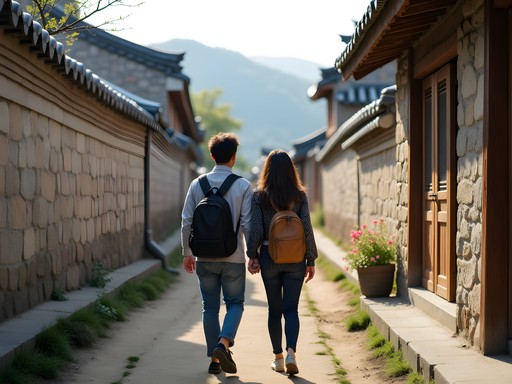

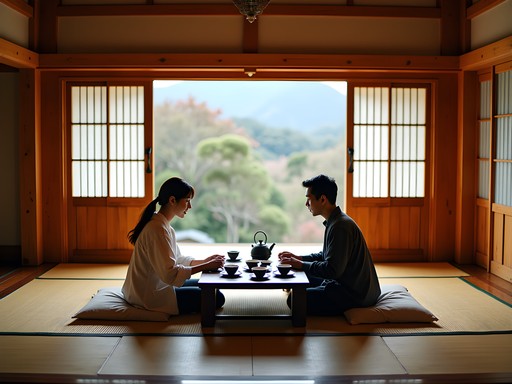




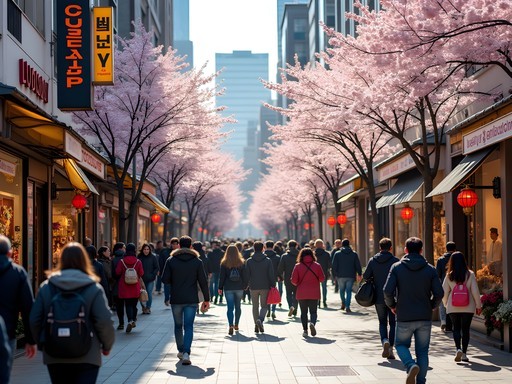
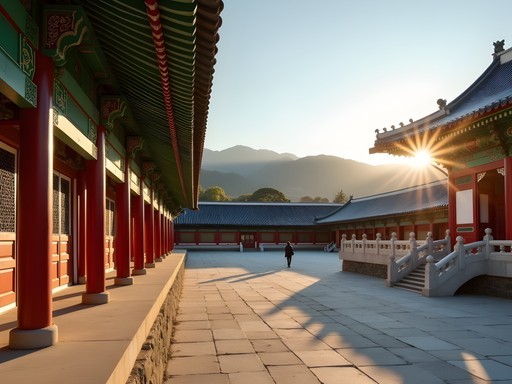
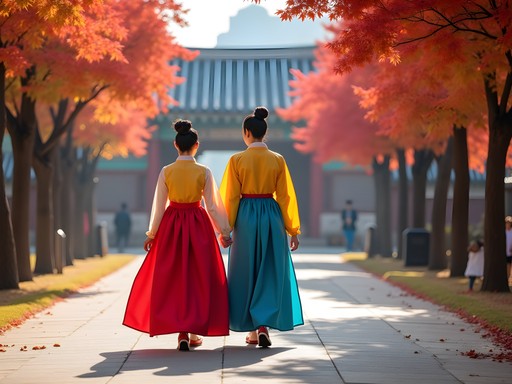
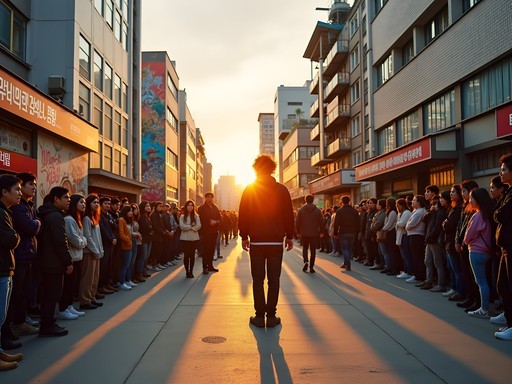
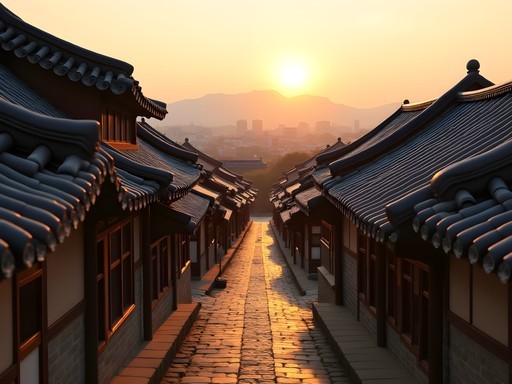
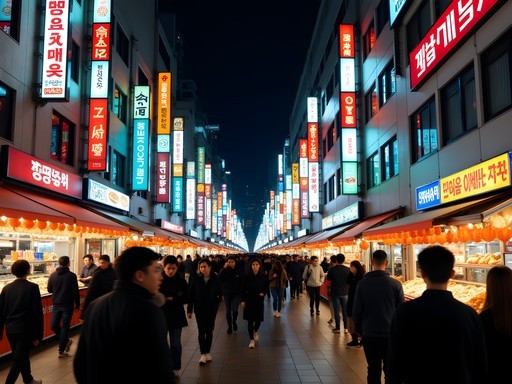

Comments
Nicole Russell
William, I love how you connected the vinyl collecting experience to discovering Seoul's heritage sites! I just returned from a solo trip to Seoul and completely fell in love with Bukchon Hanok Village. The contrast between those traditional houses and the modern skyscrapers in the background is just *chef's kiss*. For anyone planning to visit - go on weekdays if possible! I went on a Saturday and it was packed with tourists taking Instagram photos. Also worth noting: if you're interested in Korean history, the palaces have English guided tours at specific times. I found these SO much more informative than just wandering around on my own. The stories behind all the architectural details really bring the places to life!
hikergirl92
Those night photos of the palaces are stunning! Did you use a special camera setup?
William Duncan
Thanks! Just my trusty mirrorless camera with a tripod for the night shots. The palaces have special evening opening hours during certain seasons which are perfect for photography.
summerbackpacker
Visited Seoul last summer and rented hanbok (traditional Korean clothes) to wear while visiting the palaces. Most places let you in for FREE if you're wearing hanbok! Plus the photos look amazing. There are rental shops all around the palace areas. Just be prepared to walk a lot in them!
backpackstar
Did this too! Such a great tip - saved money AND got awesome photos. Just don't wear the fancy shoes they offer if you're planning to walk all day!
Jose McDonald
William, your vinyl collector comparison is spot on! There's something about discovering these historic gems in the middle of such a modern city that gives you that same thrill. I spent three days exploring just the palaces alone on my trip last year. One thing I'd add for anyone visiting Gyeongbokgung - don't miss the National Folk Museum that's on the same grounds! It's included in your palace ticket and gives amazing context to everything you're seeing. Also, if you're into photography, the lighting at Changgyeonggung Palace in late afternoon is MAGICAL. Less crowds there too!
luckychamp
Going to Seoul next month and want to see these palaces, but also love nightlife. Any recommendations on balancing the historic stuff with more modern Seoul experiences?
Nicole Russell
I'd recommend doing palaces in the morning (they open early!), then hitting Insadong for lunch. Afternoons could be for modern neighborhoods like Gangnam or Hongdae, then nightlife after. Seoul's subway makes it super easy to zip between old and new parts of the city. I used my pocket guide to plan efficient daily routes and it saved me so much time!
luckychamp
Thanks Nicole! That sounds perfect. Will definitely check out that guide too.
luckyexplorer
Those palace photos are incredible! Adding Seoul to my bucket list right now!
backpackstar
Just got back from Seoul last month and hit up most of these royal sites! Gyeongbokgung was definitely my favorite - the changing of the guard ceremony was way more impressive than I expected. Pro tip for anyone going: get there early on weekdays to avoid the crowds. Oh and definitely try the traditional tea houses near Bukchon Hanok Village after walking around. Perfect way to rest your feet after all those hills!
Jose McDonald
Did you check out Changdeokgung's Secret Garden? That was the highlight for me! But yeah, those hills in Bukchon are NO JOKE. My calves were burning after exploring all day!
backpackstar
Yes! The Secret Garden was amazing! Had to book that tour in advance though - almost missed out because it was full when I tried to join on the spot.
luckydiver
Anyone know if these sites are accessible for someone with mobility issues? My mom uses a cane and I'm worried about all the steps.
Bryce Diaz
The main palace grounds are fairly accessible with ramps at many entrances, but Bukchon has steep hills and narrow alleys that might be challenging. Changgyeonggung is probably the most accessible of the palaces. I'd recommend a morning visit when it's less crowded.
moonguy
Been to Seoul three times and your guide still taught me new things! The tip about visiting Bukchon Hanok Village on weekdays is spot on - it's way too crowded on weekends. Also worth mentioning that the Seoul subway makes getting between all these sites super easy and cheap. Just grab a T-money card when you arrive.
William Duncan
Great point about the T-money card! The subway system is incredibly efficient.
adventuremood
Is the subway system easy to navigate for non-Korean speakers?
moonguy
Absolutely! Everything is in English too, and the stations near tourist spots usually have English-speaking staff. The subway app is also great for planning routes.
travelwithkate
Just got back from Seoul and used this guide extensively - thank you! One thing to add about Bukchon: it gets PACKED with tourists around 11am-3pm. We went at 8:30am and practically had the streets to ourselves. Also worth mentioning that some of the hanok in Bukchon are actual homes, so visitors should be respectful of noise levels. We stayed in a traditional hanbok guesthouse in the area and it was magical waking up to those views! I used my pocket translator constantly in the smaller shops and with older locals - absolute lifesaver since many signs in the historic districts are only in Korean.
William Duncan
Great tip about the early morning visit to Bukchon! And yes, it's so important to remember these are residential areas. Glad the guide was helpful!
Venture X
Premium card with 2X miles, $300 travel credit, Priority Pass